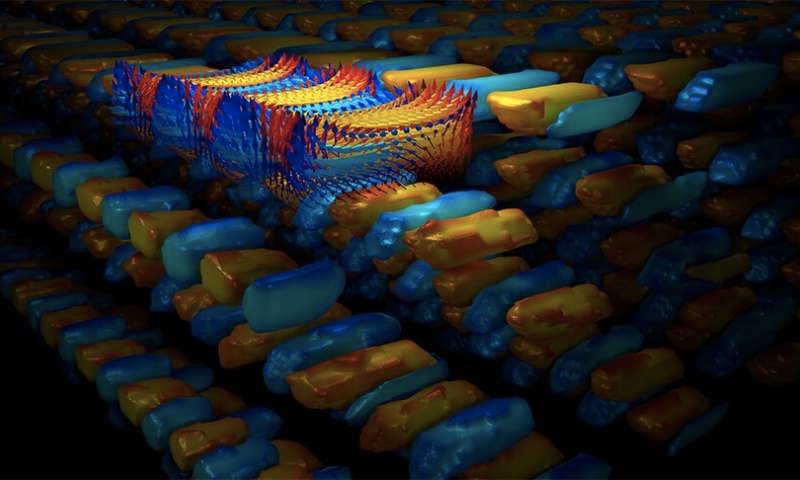Defying Laws of Nature, Scientists Force 'Supercrystals' Into Existence

A team of physicists used lasers to create "supercrystals," even as the structures fought to not exist at all.
Their accomplishment: frustrating a highly ordered material's attempts to form simpler structures and then using the energy of laser pulses to pop the frustrated material into a more complex, supercrystal state.
In materials science, matter can exist in any number of different crystalline and noncrystalline states. And sometimes, when that matter passes from one state to the next, it briefly stops over in an intermediate state that doesn't normally exist in nature. Among these exotic, fleeting states? Supercrystal structures. [What's That? Your Physics Questions Answered]
A crystal is a material whose atoms or molecules have arranged themselves into a repeating pattern. Each step in that pattern, each puzzle piece making up the crystal, is called a unit cell. These so-called supercrystals are special because the units of their crystalline structure are far larger than those found in any natural crystals — in this case, up to a million times larger than the crystals normally formed by the chemicals that make up the supercrystal.
In the new study, the physicists layered two materials, lead titanate and strontium titanate, on top of each other in such a way that each material frustrated the other's attempts to organize itself into a small-scale crystal. The result? Lots of disordered, irregular crystal and non-crystal states scattered randomly throughout the layers.
But after a superfast zap of blue laser light, the layers reorganized themselves. The laser blast added energy into the system that knocked the crystal into a state of organization, the only sort of organization possible with small-scale crystal units that have been frustrated. A vast, repeating, 3D structure appeared throughout the material, much larger than the structure that turns up in other crystals. The scientists were able to observe this structure using a second, lower-intensity flash of light.
It was the sort of structure that might fleetingly exist as a material shifts from one state to the next, but not one you'd expect to persist long term. And yet, the researchers showed, this supercrystal survived under warm, room-temperature conditions.
Sign up for the Live Science daily newsletter now
Get the world’s most fascinating discoveries delivered straight to your inbox.
The results were published March 18 in the journal Nature Materials.
- Wacky Physics: The Coolest Little Particles in Nature
- Big Bang to Civilization: 10 Amazing Origin Events
- Beyond Higgs: 5 Elusive Particles That May Lurk in the Universe
Originally published on Live Science.










